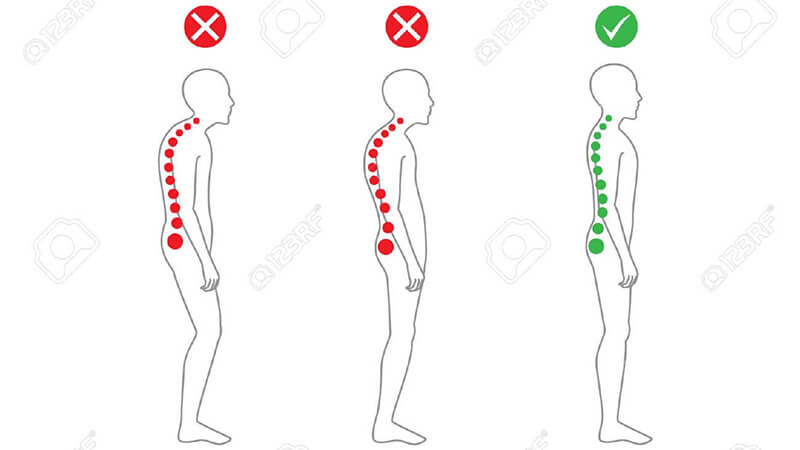Poor working posture is a big cause of repetitive injuries and back pain stress. The result of this is employee health and moral deterioration, which eventually reduces productivity, increases lost time, and heightens business costs.
Applying simple workplace ergonomics and posture techniques helps in improving the work environment and the wellbeing of all workers.
Not Just for Office Employees
The need for good workplace ergonomics good posture is not applicable to office workers only. Employees in all industries are at risk of musculoskeletal disorders caused by cumulative stress from sustained body positions or movements.
In a survey by Rand Corporation, most respondents reported working on physically strenuous conditions:
60% engaged in standing almost all of the time, maintaining uncomfortable positions at least 25% of the time, and or moving heavy loads at least 25% of the time.
75% used repetitive arm/hand movements at least 25% of the time.
Recently, the Center for Disease Control and Prevention reported that lengthy standing is associated with musculoskeletal disorders, which include muscle and back pains. Similarly, unhealthy sitting has adverse effects on the spine, head, neck, shoulder, muscle, and joints.
Other risk factors that may negatively impact work are awkward positions, force, repetition, and lack of recovery time. This piece has everything you need to know about the best workplace posture and ergonomics.
Defining a Posture

Posture refers to the position you hold yourself in an upright position against gravity while sitting or standing. The key to maintaining a good and healthy posture is training the body to stand, walk, and sit, in positions wherein minimal strain is excreted on supporting ligaments and muscles in the course of weight-bearing activities.
Effects of a Poor Posture
- General muscle aches and headaches
- Lesser blood flow to muscles – this results in more fatigue
- Nerve compression
- Compression of disk and joint structures
- Unhealthy joint alignment
- More shear forces in the spine affecting your disk integrity
- Overuse injuries
In some cases, your nerves might get inflamed or impinged, leading to a range of sensation from cold and hot through tingling and numbness in hands and feet. A characteristic of nerve damage is that the symptom is normally not in the exact place where damage occurred. For example, neck nerve irritation could cause tingling and numbness in the hand or arm.
Developing the Right Standing Posture

- Ensure that your ankle, the outside part of your hip, and the part behind your ear are vertically aligned
- Engage your lower abdominal drawing in the belly button towards the spine anytime your back is arched
- Lift your feet’s arches to keep the kneecap in line with your second toe
- Squeeze gluteal if your pelvis is rotated forward too far
- Pull your shoulders backward while drawing the shoulder blades near each other when rolled forward
Recommended Sitting Posture
- Keep your feet shoulder width apart, flat on the floor
- Sit well back into your chair
- Adjust the seat height to maintain your hip slightly higher than your knee
- Slightly tilt forward to rotate the pelvis top to keep your spine in a neutral position
- Sit in an upright balanced posture with head over shoulders
- Move your chair close to the desk that you don’t stretch your upper body forward
How to Improve Workplace Ergonomics

If you’re like many of us, your job needs you to be seated at a desk for extended periods. However, days spent sedentary put people at the risk of musculoskeletal disorders, chronic pains, and injuries. All these have long-term effects on health and productivity.
Below are Tips for improving Workplace Ergonomics
Invest in an Ergonomic Office Chair
While almost all office chairs have arm and height adjustment, not all offer the ideal comfort and flexibility. Best ergonomic office chairs have a minimum of five adjustments, with others having as many as 14 different adjustments.
Get an ergonomic office seat with features like
- Lumbar support
- Arm width and height adjustment
- Backrest width and height adjustment
- Seat and back angle control
- Tension control
Most of these supports are dial controlled, with a few others controlled with a handy bulb pump.
Invest in a Height-Adjustable Stand-Up Desk
Most U.S. workers spend long hours sitting than standing. Standing at work is a perfect way of combating the “sitting disease” effects and will make you more productive, energetic, and efficient in the office. An ergonomic adjustable standing desk will help you achieve this.
When looking for a stand-up desk, consider the following features
- Easy flexibility and adjustability to fit different heights
- Sturdiness to support all your work accessories and last long
- A tech-friendly design to accommodate your cables, wires, keyboards, monitor, and any other work accessories
- Within your budget range
Need an Instant Solution?
If you want to make your working place more ergonomic and work-friendly, look no further. Autonomous has a range high-rated sturdy and budget-friendly ergonomic office chairs, adjustable height office standing desks and cabinets among other office furniture.
Once you have ergonomic office furniture, remember to maintain the correct posture.

Nancy is a journalist with passion for technology. In her 12 years of experience, she has crafted some of the most detailed pieces that describe the importance, benefits, and progress happening in the technology world.













